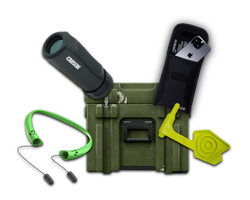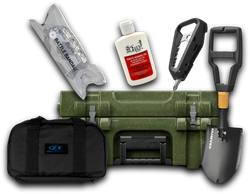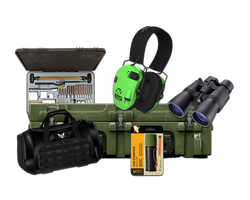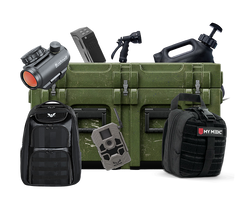How to Hold a Tactical Folding Pocket Knife: Mastering the Grip for Safety and Efficiency
Table of Contents
- Introduction
- Understanding Tactical Folding Pocket Knives
- How to Hold a Tactical Folding Pocket Knife
- Techniques for Opening and Closing a Tactical Knife
- Maintenance for Optimal Performance
- Conclusion
- FAQ
Introduction
Imagine standing at the edge of a dense forest, the sun setting behind the trees, and you need to cut through thick rope to secure your gear. Do you feel prepared? Tactical folding pocket knives are vital tools for outdoor enthusiasts, law enforcement, and everyday users alike. The adaptability and convenience of these knives make them essential in various situations, from slicing through packaging to self-defense. However, the effectiveness of a tactical knife is heavily reliant on how well it is held and operated.
In this comprehensive guide, we will explore the nuances of how to hold a tactical folding pocket knife, ensuring you can wield this essential tool with confidence and precision. We will delve into the anatomy of a tactical folding knife, the different grips you can use, techniques for opening and closing the knife safely, and best practices for maintenance. By the end of this post, you will have a thorough understanding of how to handle your tactical knife effectively, enhancing your preparedness for any situation.
We'll also highlight how Crate Club's subscription services can help you equip yourself with high-quality tactical gear, including top-of-the-line folding knives, and where to find additional tactical tools in their shop.
Understanding Tactical Folding Pocket Knives
Anatomy of a Tactical Folding Pocket Knife
A tactical folding pocket knife is more than just a sharp blade; it’s a finely engineered tool designed for utility and safety. Understanding its anatomy will help you appreciate its function and optimize your handling.
-
Blade: Typically crafted from high-quality steel, the blade is designed for durability and sharpness. The blade shape can vary, with options like drop point and tanto, each serving different purposes.
-
Handle: The handle material affects grip and comfort. Common materials include G10, carbon fiber, and aluminum, designed to withstand rigorous use while ensuring a secure hold.
-
Lock Mechanism: This is crucial for safety. Different types, such as liner locks and frame locks, secure the blade in an open position, preventing accidental closure during use.
-
Pocket Clip: This allows for convenient carrying, often attached to the side of the handle for easy access.
-
Opening Mechanism: Many tactical folding knives feature thumb studs, flippers, or assisted-opening mechanisms to deploy the blade quickly and efficiently.
Understanding these components not only enhances your confidence but also enables you to better utilize the knife’s features for various tasks.
The Importance of a Proper Grip
Holding a tactical folding pocket knife correctly is essential not only for efficiency but also for safety. An improper grip can lead to accidents, loss of control, or ineffective cutting. The right grip will depend on the task at hand, whether it's slicing, cutting, or defending.
How to Hold a Tactical Folding Pocket Knife
Common Grips for Tactical Knives
-
Forward Grip:
- Description: The most common grip, where your fingers wrap around the handle and your thumb rests on the spine.
- Usage: Ideal for cutting and slicing tasks. It allows for maximum control and leverage.
-
Technique:
- Firmly grasp the knife handle with your dominant hand.
- Place your thumb on the spine of the blade for stability.
- Position your index finger near the base of the blade for added control.
-
Reverse Grip:
- Description: The knife is held with the blade pointing downwards, often with the thumb gripping the back of the handle.
- Usage: Suitable for defensive situations where thrusting or powerful cuts are needed.
-
Technique:
- Flip the knife in your hand so the blade faces downward.
- Grip the handle firmly with your fingers wrapped around the bottom while your thumb presses against the back.
- This grip allows for powerful thrusts and quick maneuvers.
-
Choke-Up Grip:
- Description: A more precise grip where the hand moves closer to the blade.
- Usage: Perfect for detailed work, such as carving or intricate cutting.
-
Technique:
- Slide your hand up towards the blade, ensuring your fingers are clear of the cutting edge.
- Use this grip to maintain control over finer cutting tasks.
Practice Makes Perfect
To become proficient in handling a tactical folding knife, practice each grip in a safe environment. Familiarity with how to hold the knife will enable you to react swiftly and confidently in real-life situations.
Techniques for Opening and Closing a Tactical Knife
Opening Your Knife Safely
Opening a tactical folding knife should be executed with care to avoid injury. Here’s how to do it:
-
Ensure Safety: Before opening the knife, clear your area of any obstructions or hazards. Make sure your fingers are away from the blade’s path.
-
One-Handed Opening:
- Locate the thumb stud or flipper on the knife.
- Apply gentle pressure to the thumb stud or flipper, allowing the blade to swing open.
- Ensure the lock engages fully before using the knife.
-
Two-Handed Opening (if needed):
- Hold the knife with one hand on the handle and use the other to pull the blade open.
- Engage the lock mechanism securely.
Closing Your Knife Safely
Closing a tactical knife is equally important. Here’s how to do it without injury:
- Grip the Handle: Hold the knife firmly with one hand.
- Keep Fingers Clear: Ensure your fingers are away from the blade edge.
- Disengage the Lock: Press the lock mechanism to allow the blade to fold back into the handle.
- Gently Close the Blade: Use your other hand to guide the blade back into the handle, keeping your fingers clear of the edge.
Practice Regularly
Repetition is key. Regularly practicing the opening and closing techniques will help develop muscle memory, making these actions second nature in high-pressure situations.
Maintenance for Optimal Performance
Taking care of your tactical folding knife is crucial for its longevity and effectiveness. Here are some essential maintenance tips:
-
Regular Cleaning:
- After each use, clean the blade and handle with warm, soapy water.
- Dry thoroughly to prevent rust and corrosion.
-
Lubrication:
- Apply a few drops of oil to the pivot point to ensure smooth operation.
- This will help maintain the opening and closing mechanisms.
-
Sharpening:
- Keep the blade sharp using a whetstone or knife sharpener.
- Regular sharpening will enhance cutting efficiency and safety.
-
Check for Loose Parts:
- Periodically inspect your knife for any loose screws or components.
- Tighten as necessary to ensure the knife functions properly.
Proper maintenance will not only keep your knife in top condition but will also ensure it remains a reliable tool when you need it most.
Conclusion
Understanding how to hold a tactical folding pocket knife is foundational for anyone looking to enhance their preparedness and efficiency, whether in everyday tasks or critical situations. From mastering different grips to safely opening and closing your knife, every aspect contributes to your confidence and control.
Remember, a tactical knife is not just a tool; it is an extension of your will, reflecting your readiness to tackle challenges. By practicing the techniques discussed and maintaining your knife properly, you forge a reliable partnership with your gear.
As you seek the best tactical tools, consider Crate Club’s subscription services. Each month, you can receive expertly curated gear tailored to your needs, ensuring you’re always equipped with the best tools available. Explore the Crate Club Shop for a wide selection of tactical knives and gear to enhance your collection.
- Crate Club Subscription Services: Subscribe here
- Crate Club Shop: Shop now
Stay prepared, stay safe, and remember that the right gear can empower you in any situation.
FAQ
What is the difference between a tactical folding knife and a regular pocket knife?
Tactical folding knives are typically designed with features that enhance their utility in survival or defense situations, such as stronger materials, locking mechanisms, and ergonomic designs. Regular pocket knives may not have these features and are often more suited for general everyday tasks.
Can I carry a tactical folding knife in public?
The legality of carrying a tactical folding knife varies by location. Always check local laws regarding blade length, carry methods (open vs. concealed), and any restrictions on specific knife types.
How often should I sharpen my tactical knife?
Sharpening frequency depends on usage. If you use your knife regularly for heavy tasks, sharpen it every few weeks. For light use, once every couple of months may be sufficient.
Are all tactical knives equally effective for self-defense?
While many tactical knives are designed for self-defense, their effectiveness depends on the user's skill level, the knife's design, and situational factors. It's important to practice and train in safe environments.
What should I do if my tactical knife won't open or close properly?
If your knife is not functioning smoothly, check for debris in the pivot area, and ensure the locking mechanism is engaging properly. Cleaning and lubricating the knife can often resolve these issues. If problems persist, consult the manufacturer or a professional for repairs.
Share this article



